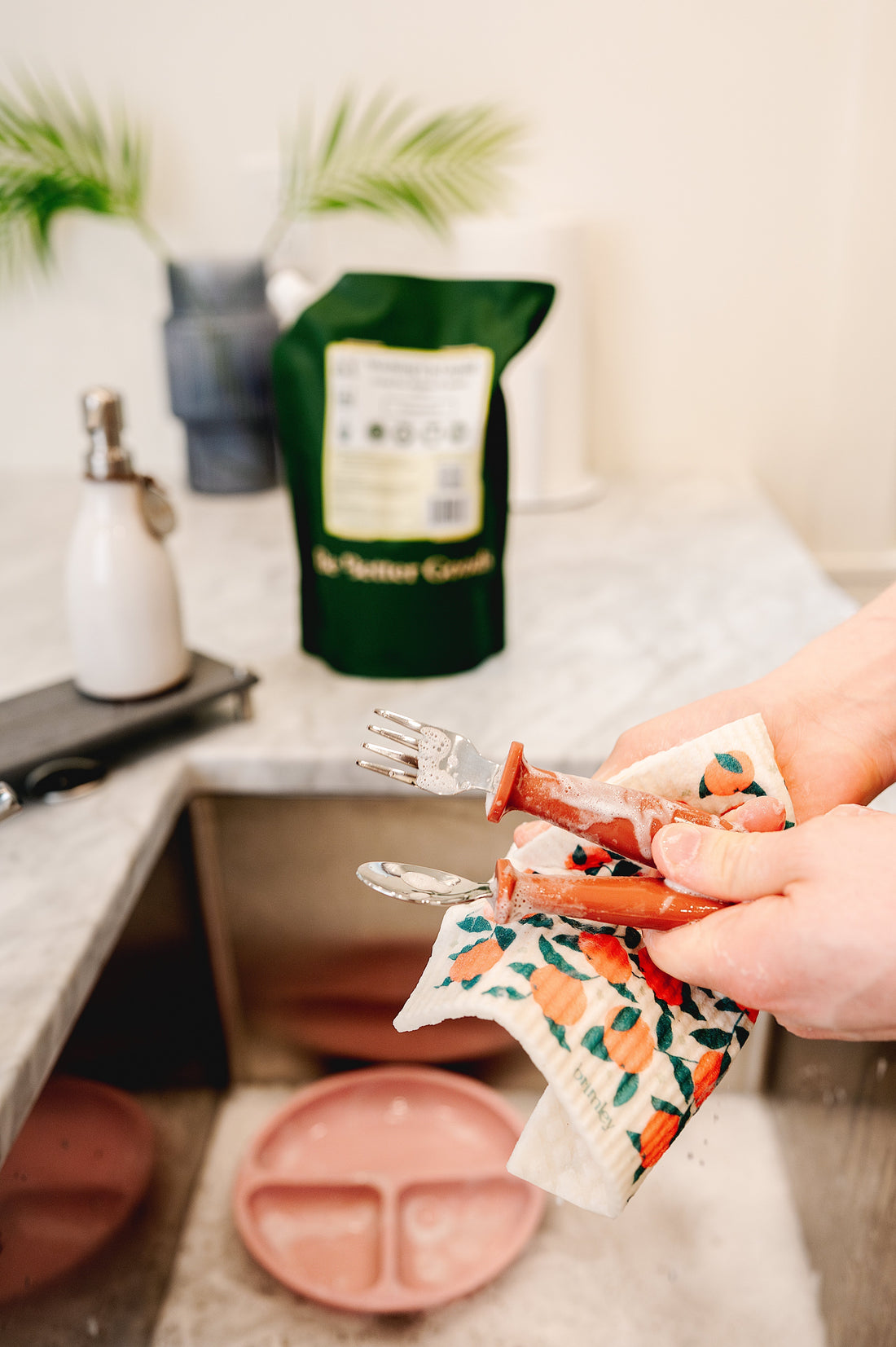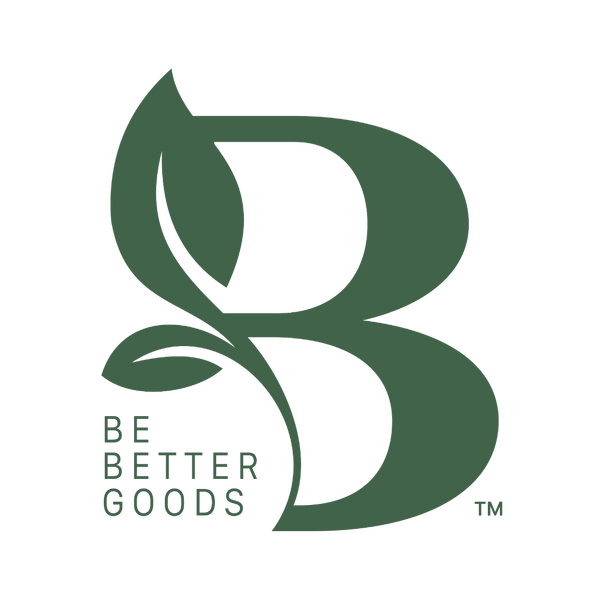
Feel — How Cleaning Products Touch Our Skin
Your skin deserves better.
A Harvard study found that 95% of our daily decisions happen subconsciously [1]. Let’s face it—most of us rarely think about how cleaning products touch our skin. Cleaning is a chore, and we typically prefer not to dwell on it.
Considering that skin is our body's largest organ, let's take a minute to break down how we are exposed to cleaning chemicals; what are the short- and long-term health effects; and how we can protect our families without compromising.
Everyday Exposure Adds Up
Some exposure is obvious. Your hands are submerged in soapy dishwater. You feel the spray from a countertop cleaner. But indirect contact is just as common — and often overlooked:
- Your baby’s arms and legs on a freshly cleaned high chair
- Your clothes, towels, and sheets after being washed in detergent
- Your feet walking barefoot on mopped floors
These are small moments. But they happen every day, over and over. And if the ingredients in your cleaners are toxic or sensitizing, your skin doesn't just brush up against them — it absorbs them.
What Skin Reactions Look Like
Short-term reactions:
- Dryness, redness, itching
- Tingling, burning, or peeling
Chronic reactions:
- Eczema flare-ups
- Contact dermatitis (an allergic reaction to certain substances)
- Hives, swelling, and persistent irritation
- Increased skin sensitivity over time
These chronic reactions don't just cause discomfort—they can disrupt daily life, reduce quality of sleep, and lead to long-term skin sensitivity.
Children, seniors, people with eczema or psoriasis, and those with autoimmune conditions are especially vulnerable. And even people without sensitive skin can become sensitized after repeated low-level exposure — a process known as cumulative sensitization.
What to Avoid on Labels
If you see these on a label, choose another product:
- “Fragrance” or “parfum” with no ingredient disclosure
- Sodium Lauryl Sulfate (SLS) and Sodium Laureth Sulfate (SLES)
- PEGs, alcohol ethoxylates, or anything ending in -eth (like pareth)
- MI, MCI, BIT, or parabens
- Products with no ingredient list at all
How Be Better Goods Protects Your Skin
At BBG, we take skin exposure seriously. That’s why:
- We use zero synthetic fragrances, only safe essential oils — or none at all
- We avoid ethoxylated surfactants, eliminating any risk of 1,4-dioxane
- We skip SLS, SLES, parabens, and isothiazolinone preservatives
- Our formulas are plant-based, biodegradable, hypoallergenic, and always petrochemical-free
Because when you’re wiping a high chair tray, washing a bottle, or folding your kid’s laundry — you shouldn’t have to worry about what’s touching your skin.
Ingredients to Watch Out For
1. Synthetic Fragrances
These are often listed as just “fragrance” or “parfum” — terms that can mask dozens of hidden chemicals, including:
- Phthalates (linked to hormone disruption and infertility)
- Parabens (preservative and endocrine disruptor)
- Allergens like limonene, linalool, eugenol (especially when oxidized)
Studies show synthetic fragrance is a leading cause of allergic contact dermatitis and skin irritation — and there is no requirement to disclose the exact ingredients in the U.S. [2].
2. Sodium Lauryl Sulfate (SLS)
A foaming agent used in many dish soaps and cleaners. It's effective — but harsh.
- Irritant at concentrations as low as 2% [3]
- Some popular products (like Dawn) contain 20–30% SLS
- Linked to skin barrier disruption, inflammation, and eczema flares [4]
3. Ethoxylated Surfactants (e.g. SLES, PEGs, Alcohol Ethoxylates)
These are produced via ethoxylation, a chemical process often leaving behind 1,4-dioxane — a probable human carcinogen [6]. Commonly found in:
- All-purpose sprays
- Laundry detergents
- Dish soaps and glass cleaners
⚠️ There’s no way to completely remove 1,4-dioxane from ethoxylated surfactants without expensive purification — which most brands skip [7].
4. Petrochemical Preservatives (Isothiazolinones + Parabens)
- Methylisothiazolinone (MI) and Benzisothiazolinone (BIT) are used in tiny concentrations — but are among the top skin allergens worldwide
- MI was named “Allergen of the Year” (2013) by the American Contact Dermatitis Society
- Still used in many “natural” or “green” products that don’t disclose full preservative systems
Coming Next: What You Breathe In Matters, Too
Stay tuned for Part 2 in our “Why Ingredients Matter” series, where we explore what cleaning products leave in the air — and how it impacts your lungs, hormones, and home.
Want to go deeper?
→ Explore our Ingredient Glossary
→ Browse products made for sensitive skin
Sources
[1] Harvard Business School - Subconscious Decision Making
[2] MDPI - Fragrance as Top Allergen
[3] MDPI - SLS Skin Irritation
[4] SAGE Journals - SLS Sensitization
[5] ScienceDirect - SLS Emerging Contaminant
